- Overview
- Flares & Triggers
- Causes & Risks
- Types
- Locations on the Body
- Tests & Diagnosis
- Treatment
- Living With
- Complications
- Appointment Prep
- View Full Guide
Over the Counter Psoriasis Treatments

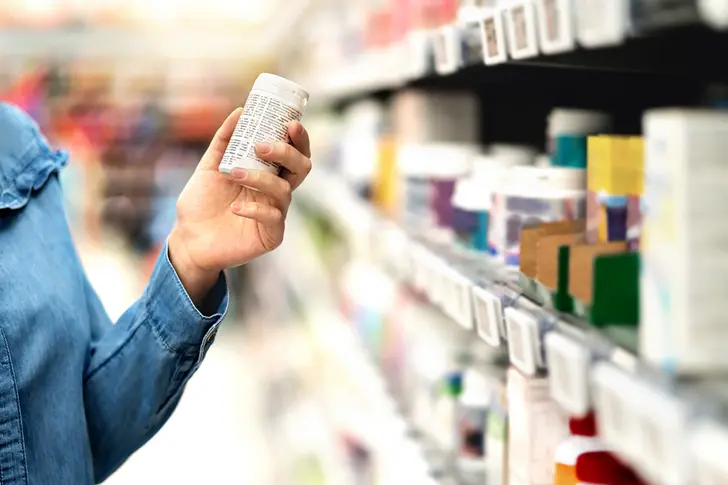
Understanding OTC Psoriasis Treatments
Over-the-counter products can help manage mild to moderate psoriasis symptoms like scaling, itching, and redness. They can complement prescription medications and help manage symptoms. While OTC options typically can't replace medical treatment for severe psoriasis, they can provide relief and can help maintain your skin health between flare-ups. Many people with psoriasis find that using OTC products reduces their dependence on stronger medications and helps them manage day-to-day symptoms more effectively.
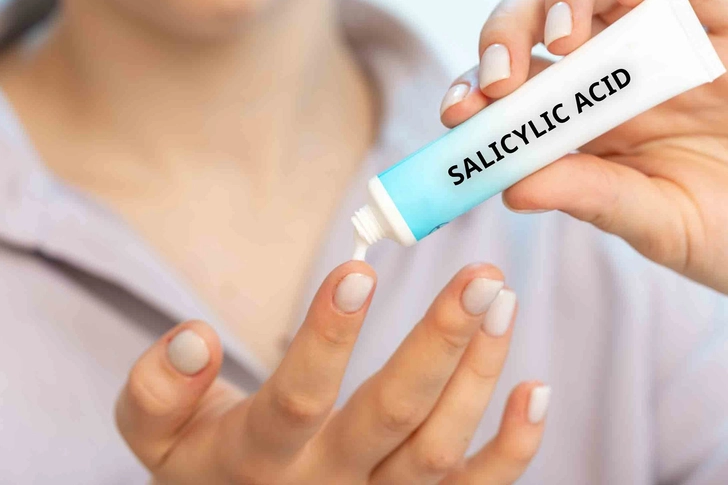
Salicylic Acid for Scaling
Salicylic acid helps remove scales by softening keratin, a protein that makes up a significant portion of the skin's structure. Available in concentrations ranging from 0.5% to 5% in shampoos, soaps, ointments, and medicated pads, it's particularly effective for managing scalp psoriasis and thick plaques. It helps to lift and remove the buildup of dead skin cells that form psoriasis plaques. For best results, start with lower concentrations (1-2%) and gradually increase if needed. Don't apply it to open wounds or inflamed areas, as it may cause stinging or irritation. Consistent use is key—apply as directed for several weeks for the best results.
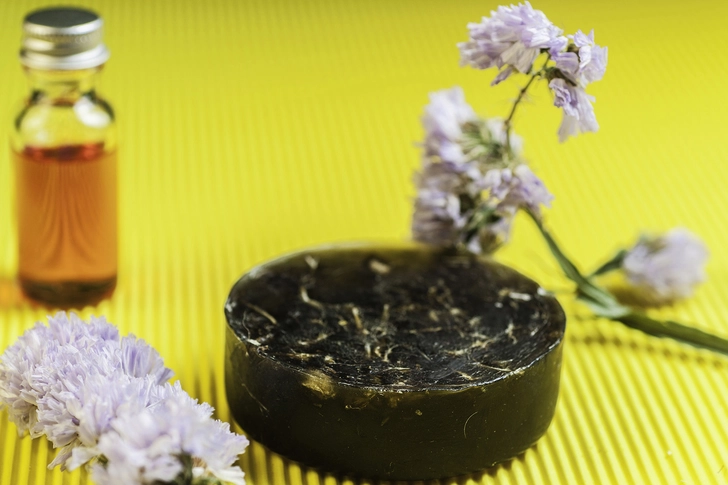
Coal Tar Benefits
Coal tar works by slowing rapid skin cell growth and reducing inflammation, scaling, and itching. This time-tested treatment has been used for over a century and remains one of the most effective OTC options, particularly for scalp and plaque psoriasis. Available in various strengths (0.5-5%) in shampoos, creams, oils, and bath solutions, coal tar products should be introduced gradually into your routine. Start with lower concentrations and shorter application times to see how your skin tolerates it. Be aware that coal tar products may cause irritation, have a strong odor, and can stain clothing, bedding, and light-colored hair. They also significantly increase sun sensitivity, so wear sunscreen and limit your sun exposure for up to 24 hours after application.

Daily Moisturizing
Moisturizers are a cornerstone of psoriasis management, working to trap water in the skin and reduce dryness, scaling, and itching. Apply right after bathing when skin is still damp (within 3-5 minutes) for the best results. Thick creams and ointments provide better moisture retention than lighter lotions, making them ideal for psoriasis-affected skin. Look for products with ingredients like ceramides, hyaluronic acid, glycerin, shea butter, and jojoba oil, which help repair the skin barrier and keep your skin hydrated. Fragrance-free options are best, as fragrances can irritate sensitive skin. Daily moisturizing is important even when psoriasis is not flaring, as it can help prevent future flare-ups by keeping your skin healthy.

Petroleum Jelly for Protection
Petroleum jelly creates a protective barrier that locks in moisture and helps heal dry, cracked skin associated with psoriasis. This inexpensive option is particularly useful for tough areas like elbows, knees, and the lower back where psoriasis plaques are often thicker and more stubborn. For daily maintenance, apply to trouble spots after showering while skin is still slightly damp to seal in moisture and reduce flaking and irritation. For intensive overnight treatment, apply a thick layer to affected areas before bed and cover with cotton gloves, socks, or plastic wrap to enhance penetration. While petroleum jelly won't treat the underlying causes of psoriasis, it can significantly improve skin comfort, reduce the appearance of plaques, and prevent further drying that can trigger flare-ups.
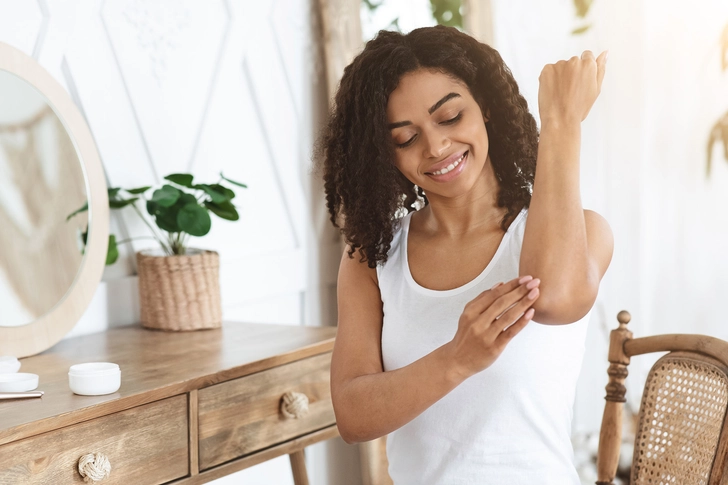
Scale Lifters
Products like salicylic acid, lactic acid, urea, or glycolic acid help remove scales by breaking down tough skin proteins and speeding up the shedding of dead skin cells. These ingredients can help other treatments penetrate through thick psoriasis plaques. For best results, use them before applying medicated creams. Products containing urea (10-40%) are particularly effective for thick, stubborn plaques, while lactic acid (5-12%) provides both exfoliation and hydration. Start with lower concentrations and apply every other day, gradually increasing the frequency. Be patient—it may take 1-2 weeks of consistent use to see noticeable scale reduction, but these products can dramatically improve the appearance of plaques.
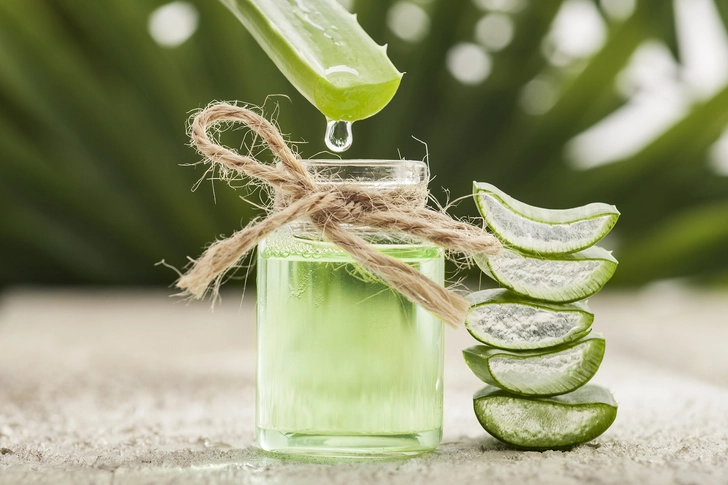
Aloe Vera for Soothing Relief
Pure aloe vera gel offers natural relief for psoriasis symptoms, helping to reduce redness, scaling, and inflammation. Look for products with high aloe content (ideally 99% or higher) and minimal additives, preservatives, or fragrances, or use gel directly from the plant for the purest application. Aloe contains compounds with anti-inflammatory, antimicrobial, and wound-healing properties that can help calm irritated skin. For best results, apply several times daily to clean skin and allow it to fully absorb getting dressed. Many people find aloe helpful for facial psoriasis, where stronger treatments may be too harsh. While research shows moderate benefits for psoriasis, aloe vera works best as part of a comprehensive treatment approach rather than a standalone solution.

Epsom Salt Baths
Adding Epsom salt (magnesium sulfate) to warm—not hot—baths can help soften and remove scales while easing the itching and irritation associated with psoriasis. The magnesium in Epsom salt is thought to reduce inflammation by improving cellular function and decreasing stress hormones that can trigger flares. Dissolve 2 cups of Epsom salt in a standard-sized bathtub filled with comfortably warm water (94-98°F). Soak for 15-20 minutes, gently rubbing affected areas with a soft washcloth to help remove loosened scales. After bathing, gently pat skin dry and apply a heavy moisturizer. Limit these baths to 2-3 times weekly to prevent drying out your skin, and always follow with moisturizer. For sensitive skin, start with just 1 cup of salt and shorter soaking times.

Anti-Itch Products
Managing the persistent itch of psoriasis is important to prevent the scratch-itch cycle that can worsen plaques. Calamine lotion provides a cooling sensation and mild astringent properties that temporarily relieve itching. Over-the-counter hydrocortisone creams (0.5-1%) reduce inflammation and itching but should only be used for short periods (1-2 weeks maximum) as directed, as long-term use can thin the skin and potentially worsen psoriasis over time. Products containing menthol (0.5-1%), camphor, or pramoxine provide cooling sensations that interrupt itch signals. For nighttime relief, antihistamines like diphenhydramine may help reduce itching and improve sleep. Apply anti-itch products to clean, dry skin, avoiding broken or infected areas, and don't cover your skin with a non-breathable bandage.
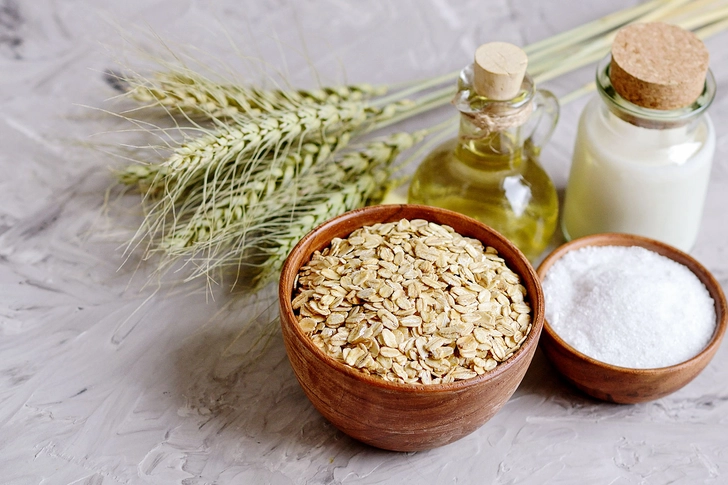
Oatmeal Treatments
Colloidal oatmeal has been recognized for centuries for its skin-soothing properties and is now backed by research showing its effectiveness for inflammatory skin conditions. Oatmeal baths can significantly reduce the itching, redness, and inflammation associated with psoriasis. Look for commercial bath products containing colloidal oatmeal or make your own by grinding plain, unflavored rolled oats into a fine powder using a food processor or coffee grinder. The resulting powder should be fine enough to stay suspended in water. Add one cup to warm (not hot) bathwater while the tub is filling. Soak for 15-20 minutes, gently patting—not rubbing—affected areas. After bathing, pat skin dry and apply moisturizer while skin is still damp. Oatmeal can also be made into a paste with a little water for spot treatment of particularly itchy or inflamed areas.
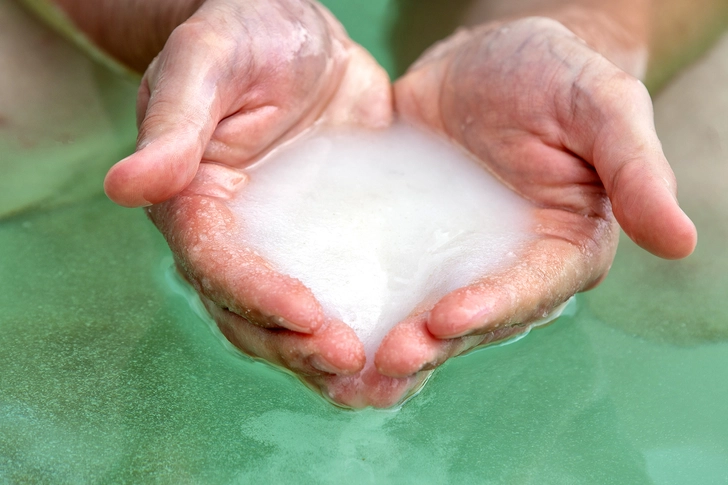
Dead Sea Salts
Bath soaks with authentic Dead Sea salts have long been used to manage psoriasis symptoms, mimicking the beneficial effects reported by people who visit the Dead Sea for treatment. These salts contain a unique mineral composition—rich in magnesium, potassium, calcium, bromide, and sulfates—that is different from regular table salt or Epsom salt. The high mineral content helps improve skin hydration, reduce inflammation and roughness, and help to slough off scales. For a soothing bath, dissolve 1-2 cups of genuine Dead Sea salt in warm water and soak for 15-20 minutes. Be sure to buy from reputable sources, as not all products labeled "Dead Sea salt" contain authentic minerals. Use 2-3 times weekly for best results, and always follow with moisturizer. Some people experience mild stinging at first, but that usually goes away.
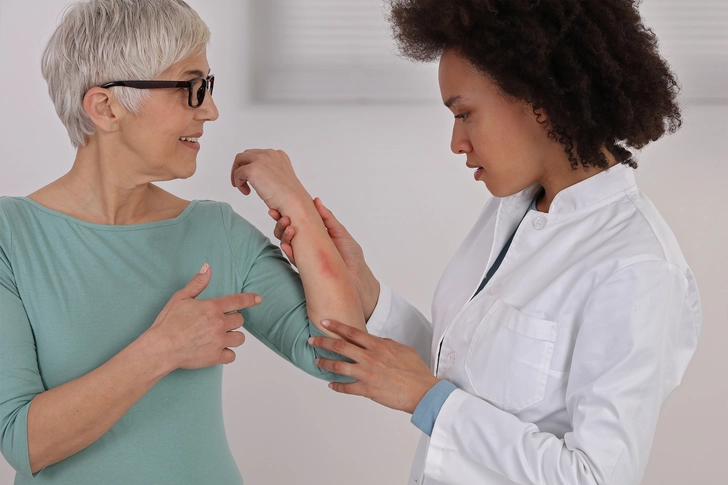
When to See a Doctor
Talk to a dermatologist if OTC treatments aren't helping after 2-3 weeks of consistent use, or if your psoriasis worsens, spreads to new areas, or causes significant discomfort despite treatment. Get immediate medical care if you develop signs of infection in psoriasis plaques, such as increased redness, warmth, swelling, pus, or fever. Joint pain, especially with swelling, stiffness, or limited range of motion, could indicate psoriatic arthritis and requires prompt evaluation. Severe psoriasis (covering more than 10% of the body) typically requires prescription treatments that may include topical steroids, vitamin D analogs, systemic medications, or biologics.
PHOTO CREDENTIALS
Slide 1 - Tero Vesalainen / Shutterstock
Slide 2 - luchschenF / Shutterstock
Slide 3 - elenovsky / Shutterstock
Slide 4 - MJTH / Shutterstock
Slide 5 - PeopleImages / Getty Images
Slide 6 - Prostock-studio / Shutterstock
Slide 7 - Nikolay Litov / Shutterstock
Slide 8 - kazmulka / Shutterstock
Slide 9 - Grace Cary / Getty Images
Slide 10 - Jelena Irikova / Getty Images
Slide 11 - iStock / Getty Images
Slide 12 - Albina Gavrilovic / Getty Images
SOURCES
National Psoriasis Foundation: “Over the Counter Topicals,” “Steroids.”
HealthLink BC: “Keratolytic Emollients – Topical.”
DermNet: “Salicylic acid.”
American Academy of Dermatology: “What Psoriasis Treatments are Available Without a Prescription?” “Dermatologists’ Top Tips for Relieving Dry Skin,” “Psoriasis Treatment: Coal Tar,” “Psoriasis Treatment: Corticosteroids You Apply to the Face.”
Dermatology and Therapy: “Urea in Dermatology: A Review of its Emollient, Moisturizing, Keratolytic, Skin Barrier Enhancing and Antimicrobial Properties.”
International Journal of Cosmetic Science: “Comparative effectiveness of alpha-hydroxy acids on skin properties.”
Dermatologic Therapy: “Evaluation of safety and efficacy of topical 4% nicotinamide in treatment of psoriasis; among a representative sample of Egyptians (an analytical observational study).”
Skin Pharmacology and Physiology: “Niacinamide - mechanisms of action and its topical use in dermatology.”
Journal of Clinical and Aesthetic Dermatology: “Ceramide- and Keratolytic-containing Body Cleanser and Cream Application in Patients with Psoriasis: Outcomes from a Consumer Usage Study.”
Dermatologic Therapy: “Topical application of a linoleic acid-ceramide containing moisturizer exhibit therapeutic and preventive benefits for psoriasis vulgaris: a randomized controlled trial.”
Advanced Biomedical Research: “Topical nicotinamide in combination with calcipotriol for the treatment of mild to moderate psoriasis: A double-blind, randomized, comparative study.”
Dermatology and Therapy: “Comparing the Potential for Irritation of a Ceramide-Based Moisturizer with a Urea-Based Moisturizer for Pediatric Atopic Dermatitis.”
American Academy of Dermatology.
FDA. “FDA approves Amjevita, a biosimilar to Humira," "Differin (adapalene) Gel, 0.3%," "Aklief (trifarotene) cream, for topical use," "Medication Guide Elidel (EĹ-ee-del) (pimecrolimus) Cream, 1%."
Mayo Clinic: "Ruxolitinib (Topical Application Route)," "Upadacitinib (Oral Route)," "Valacyclovir (Oral Route)," "Itraconazole (Oral Route)," "Salicylic Acid (Topical Route)," "Tretinoin (Topical Route)," "Tacrolimus (Topical Route)," "Abrocitinib (Oral Route)," "Acitretin (Oral Route)," "Apremilast (Oral Route)," "Methotrexate (Oral Route)," "Prednisone (Oral Route)," "Acyclovir (Oral Route, Intravenous Route)," "Famciclovir (Oral Route)," "Terbinafine (Topical Route)," "Ketoconazole (Topical Route)," "Tazarotene (Topical Route)," "Clindamycin (Oral Route)," "Mupirocin (Topical Route)."
Medscape: "Deucravacitinib."
Johns Hopkins Arthritis Center: "Side Effects of Biologic Medications."
Cleveland Clinic: "Azathioprine," "Dicloxacillin Capsules," "Anthralin topical cream."
National Health Service (U.K.): "Topical corticosteroids," "Side effects of coal tar," "Side effects of benzoyl peroxide," "Anaphylaxis."
Canadian Medical Association Journal: “The use of Epsom salts, historically considered.”
Epsom Salt Council: "About Epsom Salt," "Soaking," "Frequently Asked Questions," "Soothe Sore Paws with Epsom Salt."
Cleveland Clinic: "Should You Take an Epsom Salt Bath?" "How to Cope with High-dose Chemo and Radiation Therapy Side Effects," "How You Can Prevent and Treat Painful Ingrown Toenails."
Nutrients: "Myth or Reality – Transdermal Magnesium?"
BMC Medicine: "Dietary magnesium intake and the risk of cardiovascular disease, type 2 diabetes, and all-cause mortality: a dose-response meta-analysis of prospective cohort studies."
Osteoarthritis and Cartilage: "OARSI Guidelines for the Non-Surgical Management of Knee Osteoarthritis."
Mayo Clinic: "Fibromyalgia."
Cedars-Sinai: "Fibromyalgia."
National Psoriasis Foundation: "Herbal and Natural Remedies."
Indian Dermatology Online Journal: "Bathing Practices in Dermatology: Uses and Implications for Patient Management."
National Center for Complementary and Integrative Health: " 'Detoxes' and 'Cleanses': What You Need To Know."
Medical Hypotheses: "Magnesium for treatment-resistant depression: a review and hypothesis."
Biological Trace Element Research: "The Role of Magnesium in Sleep Health: a Systematic Review of Available Literature."
Indian Journal of Public Health Research and Development: "Effect of Using Warm Shower and Warm Water Footbath with and Without Adding Epsom Salt on Fatigue Level in Systemic Lupus Patients."
Journal of Clinical and Diagnostic Research: "Effectiveness of Foot Exercise and Epsom Salt Water on Reduction of Foot Oedema among Antenatal Mothers."
The Arthritis Foundation: "The Best Non-Drug Ways to Ease Knee Pain."
Hospital for Special Surgery news release: "Are the Widely Touted Benefits of an Epsom Salt Bath Legit?"
National Institutes of Health: "Epsom salt."
National Capital Poison Center: "The Baby Ate a Bath Bomb!"
PetPlace Drug Library: "Magnesium Sulfate (Epsom Salts) for Dogs and Cats."
National Library of Medicine: "Epsom salt."
Lindsey Bordone, MD, assistant professor of dermatology, Columbia University Medical Center (CUMC).
Latanya Benjamin, MD, associate professor of pediatric dermatology, Florida Atlantic University.
National Psoriasis Foundation: “Psoriasis Causes and Triggers,” “Herbs and Natural Remedies,” “Over-the-counter (OTC) Topicals,”
Journal of Drugs and Dermatology: “Anti-inflammatory activities of colloidal oatmeal (Avena sativa) contribute to the effectiveness of oats in treatment of itch associated with dry, irritated skin,” “Mechanism of action and clinical benefits of colloidal oatmeal for dermatologic practice.”
American Academy of Dermatology: “What Psoriasis Treatments Are Available Without A Prescription?” “8 Ways To Stop Baths And Showers From Worsening Your Psoriasis.”
Seminars in Arthritis and Rheumatism: “Scientific evidence of the therapeutic effects of dead sea treatments: as systematic review.”
Dermatology and Therapy: “Efficacy of a Topical Formulation of Sodium Bicarbonate in Mild to Moderate Stable Plaque Psoriasis: a Randomized, Blinded, Intrapatient, Controlled Study.”
Journal of the American Academy of Dermatology: “Scaly skin and bath pH: Rediscovering baking soda.”
Indian Dermatology Online Journal: “General measures and quality of life issues in psoriasis.”
International Journal of Molecular Sciences: “Anti-Inflammatory and Skin Barrier Repair Effects of Topical Application of Some Plant Oils.”
University of Maryland Medical Center: “Understanding Eczema and Psoriasis.”
Indian Journal of Dermatology: “Moisturizers: The Slippery Road.”
International Journal of Dermatology: “Bathing in a magnesium-rich Dead Sea salt solution improves skin barrier function, enhances skin hydration, and reduces inflammation in atopic dry skin.”
Steve Xu, MD, dermatologist; instructor, Northwestern Medicine Feinberg School of Medicine.
Google Patents: “Improvement in products from petroleum.”
The Journal of Clinical Investigation: “Skin care in the aging female: myths and truths.”
Indian Journal of Dermatology: "Moisturizers: The Slippery Road."
The Journal of Allergy and Clinical Immunology: “Petrolatum: Barrier repair and antimicrobial responses underlying this 'inert' moisturizer.”
Indian Dermatology Online Journal: “Topical Therapies in Psoriasis.”
Seminars in Plastic Surgery: Update on Postsurgical Scar Management.”
JAMA Pediatrics: “Cost-effectiveness of Prophylactic Moisturization for Atopic Dermatitis.”
American Academy of Pediatrics: “Head Lice.”
The Journal of Pediatric Nurses: “Home remedies to control head lice: assessment of home remedies to control the human head louse, Pediculus humanus capitis (Anoplura: Pediculidawe).”
CDC: “Parasites: Treatment.”
American Academy of Dermatology: “How to prevent and treat blisters,” “5 ways to use petroleum jelly for skin care,” “Treating sunburn.”
Harvard Health Publishing: “Hemorrhoids.”
Cleveland Clinic: “Top 6 Winter Health Hazards and How to Beat Them.”
American Academy of Ophthalmology: “How To Use Cosmetics Safely Around Your Eyes,” “Can petroleum jelly (Vaseline) be put into an eye that was scratched by being poked with paper?”
University of Illinois Extension: “Stain Solutions: Petroleum Jelly.”
The Ohio State University Wexner Medical Center: “Oxygen Safety in the Hospital.”
American Lung Association: “Using Oxygen Safely.”
University of Chicago Medicine, Comer Children’s: “Caring for Your Child on Oxygen.”
Mayo Clinic: “Petroleum jelly: Safe for a dry nose?”
International Journal of Clinical Pharmacy: “Safety in the use of Vaseline during oxygen therapy: the pharmacist’s perspective.”
Northern New England Poison Center: “Petroleum Jelly (Vaseline, Aquaphor)."
Obstetrics and Gynecology: “Intravaginal practices and risk of bacterial vaginosis and candidiasis infection among a cohort of women in the United States.”
Journal of Applied Sciences: "A Review on Petroleum: Source, Uses, Processing, Products and the Environment."
